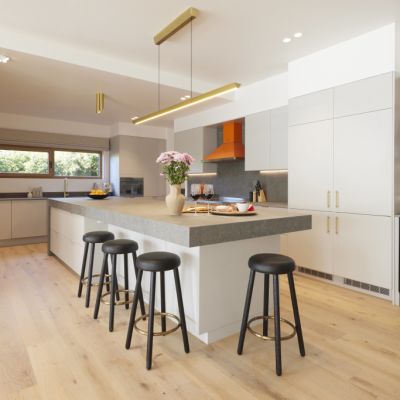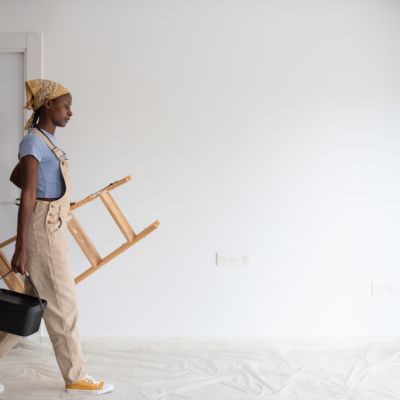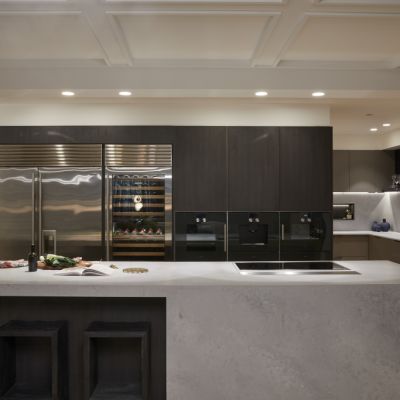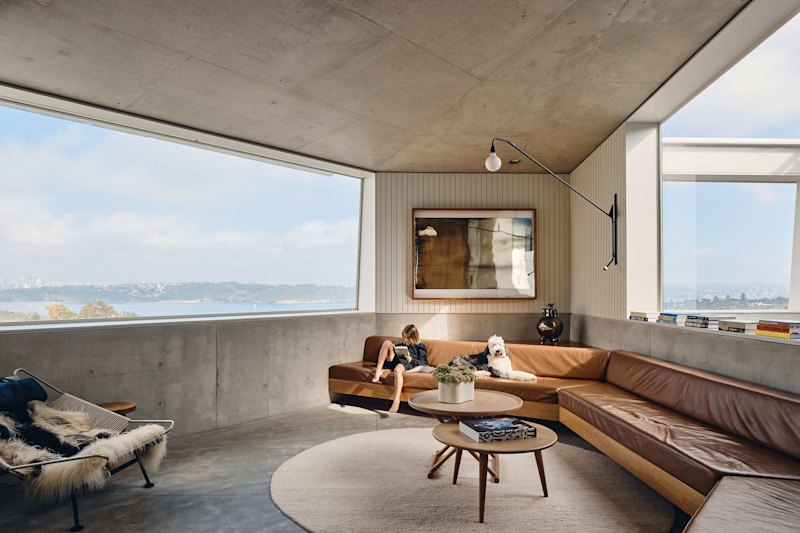The best ways to add colour to your kitchen
Kitchens can be quite an investment and, when it comes to colour choice, it’s understandable that classic whites or neutrals often top the list. As trends change, these colour schemes will last and continue to look stylish for years to come. Or so the logic goes.
But what about that niggling urge that tells you to go wild with a vibrant accent wall, appliance or artwork to break through the sea of kitchen-y sameness? Like The Block 2023 contestants Liberty and Eliza, who wowed the judges with their statement-making orange oven.
We asked the experts for their advice on how to incorporate colour into your kitchen without going overboard or creating something you’ll regret. They agreed that colour can take a kitchen from looking stagey and generic to being warm and personal, giving it the inviting and hospitable vibe that every renovator and kitchen designer ultimately strives for.
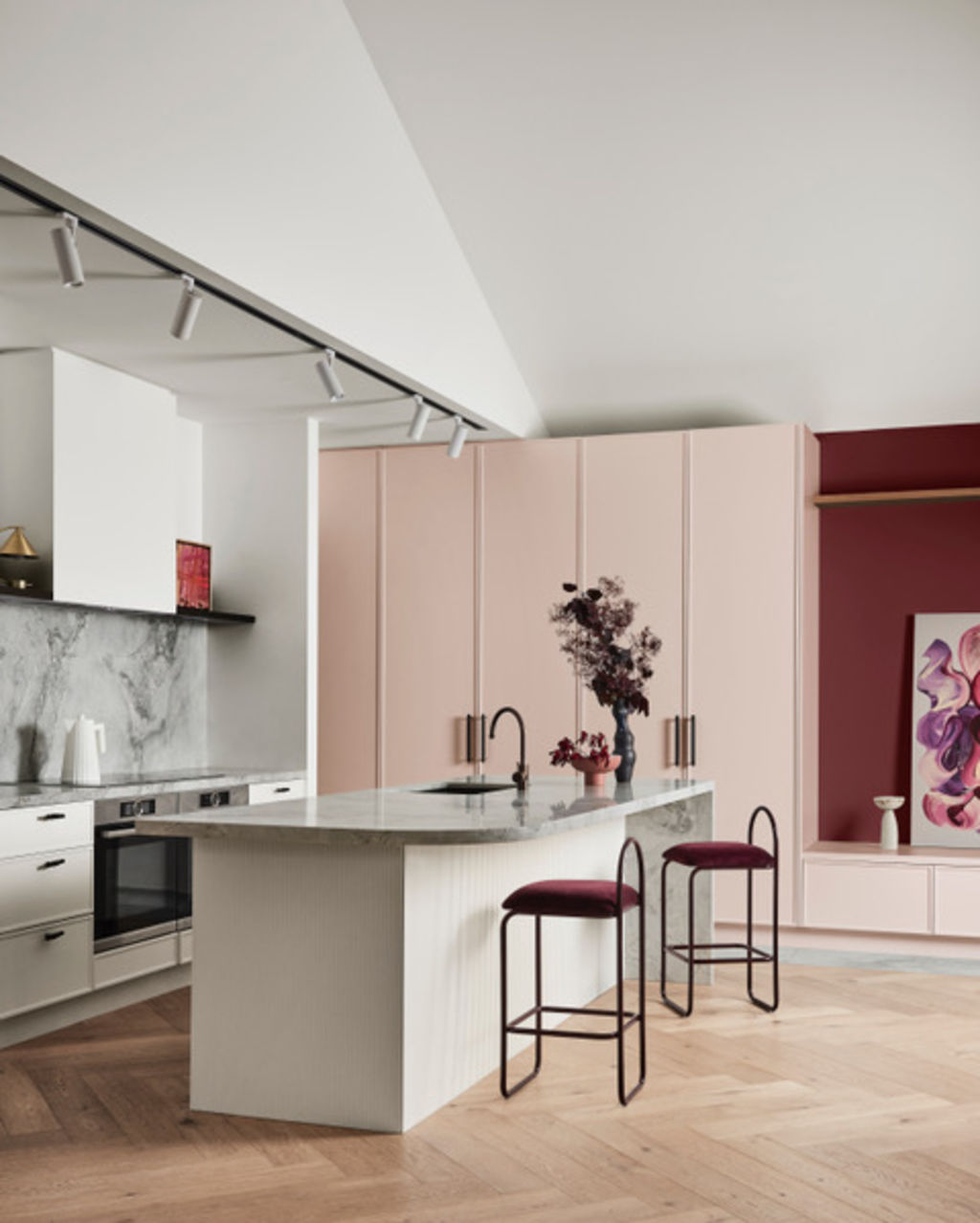
As Dulux colour expert Andrea Lucena-Orr says, “although white and neutral hues are still predominantly the default when it comes to painting a kitchen, we are seeing more and more colour confidence in 2023. We are also seeing more colour in cabinetry, which is exciting.”
For those thinking of adding colour via walls or cabinets, she says you should consider how the colour scheme will complement other elements, such as tiles, splashbacks, benchtops and floors.
“Anything goes these days, with bolder colour choices being made in homes and kitchens everywhere,” Mairav Whitten of Design Miss M adds. “Clients are now more open to introducing featured pops of colour with eye-catching kitchen benchtops, coloured cabinets and amazing overhead lighting.
“The result? A cosier kitchen that’s visually appealing, more inviting, and a space you want to hang out in, instead of having to.”
To choose colours that you can live with long-term, Whitten advises thinking beyond immediate trends.
“Contrasting colours will be energising, while complementary colours create a calming space,” she says.
“A popular kitchen design trend is using two-tone cabinetry, where the upper and lower cabinets are in different colours or finishes to create a striking contrast. This adds visual interest and breaks the monotony of a single-colour scheme.”
Lucena-Orr recommends sourcing paint stickers or sample pots in your preferred colours to give you time to weigh up exactly how you feel about them before taking the plunge.
“Always remember the importance of testing paint colours before undertaking an entire room renovation to see how they will look under all forms of lighting,” she says.
It’s also important to remember that colour can have a huge impact on the perception of space in your kitchen.
“Lighter colours can make small kitchens appear more spacious, while dark colours can add cosiness to larger spaces,” Whitten advises.
In a tiny kitchen, you might want to keep things lighter and brighter, and use pops of colour as accents.
In fact, using colour as an accent rather than going “all in” is an excellent way for the risk-averse renovator to dip their toes in the world of colour without getting too stressed out.

“The thought of painting an entire room can be nerve-racking,” Lucena-Orr says.
“Painting a feature wall is a fantastic way to experiment with colour in a smaller way, while still providing your kitchen with a much needed refresh.” Alternatively, “your kitchen may have a small nook or shelving that you can add colour to. You can even add colour to your dining table and chairs for a different dynamic.”
If you’re sold on the idea of experimenting with subtle colour highlights in your kitchen, accent walls and cabinetry are just two of your options. There are countless other ways to embrace non-white hues.
Some of Whitten’s suggestions are to choose colourful appliances and “whitegoods”, like fridges, freezers, upright ovens and exhaust fans.
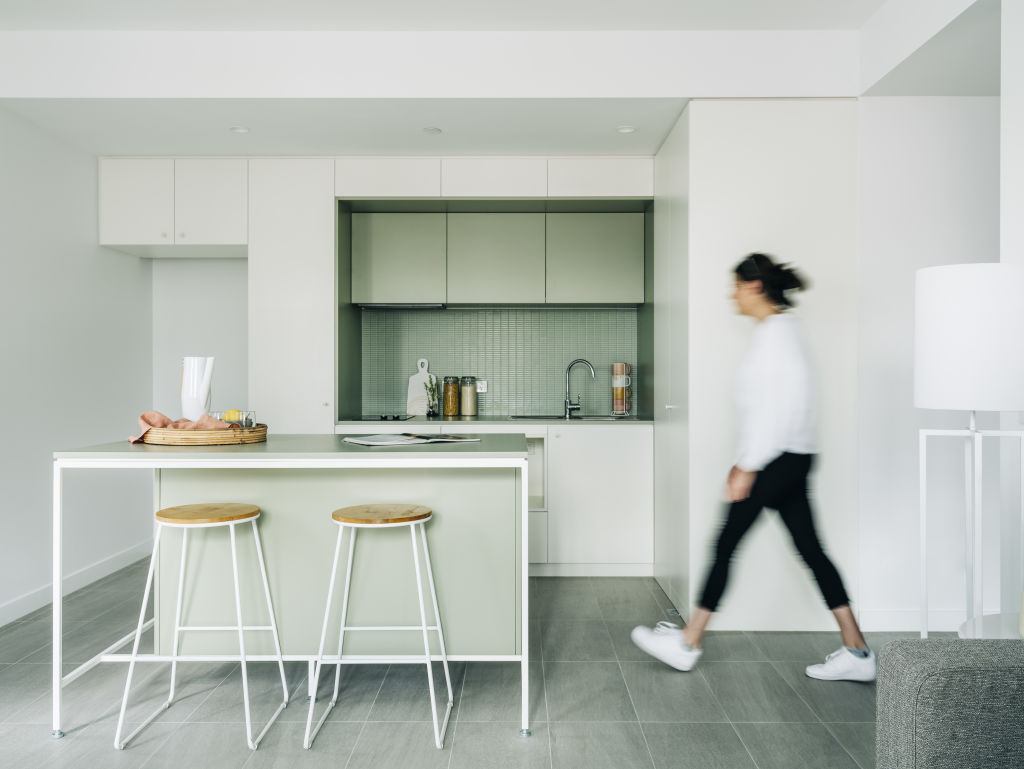
Or, decorate with textiles, curtains, rugs and artwork. Even the refreshing burst of greenery provided by grouping some plants together can relieve the monotony of a neutral kitchen colour scheme.
“Don’t forget your floor – this can also be another opportunity to create colour and texture,” Whitten adds.
Have confidence and take things in small steps. “Adding colour in the kitchen can create such a positive transformation,” Lucena-Orr concludes.
“Make sure you look at lots of inspirational images so you can really pinpoint the colours that you love and that will make a positive impact for your kitchen and lifestyle.
“You also can add colour in small quantities and build on it as your confidence grows.”


We recommend
We thought you might like
States
Capital Cities
Capital Cities - Rentals
Popular Areas
Allhomes
More
